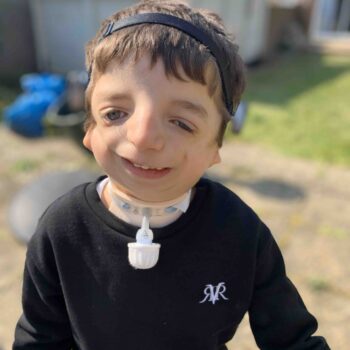
Located just under two hours from London in South East England is the coastal city of Brighton, home to a 7-year-old child who is truly living up to his name.
Loui Legend Heath Herriott was born with Treacher Collins syndrome, a rare genetic condition that affects the development of bones and tissues in the face, and occurs in about 1 in 50,000 newborns worldwide.
Though the severity of this syndrome varies from child to child, impacted areas often include the cheekbones, jaws, ears and eyelids, and children often have problems breathing, swallowing, chewing, hearing and with speech.
While growing up in the United Kingdom, Loui underwent a dozen surgical operations and tests under local and general anesthetics, including the placement of a tracheostomy tube to help him breathe.
The medical and surgical needs for children with Treacher Collins syndrome are complex and require specialized training from doctors uniquely experienced in caring for conditions that affect the head and face. When Loui’s parents began researching more ways to help their son live the healthiest and most fulfilling life possible, they turned to Seattle Children’s.
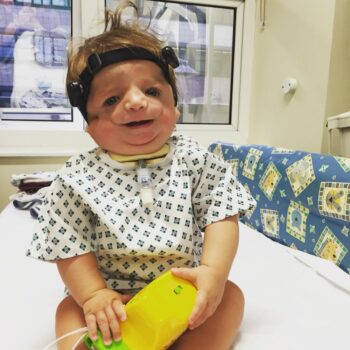
“They couldn’t do anything to help us at home,” said Loui’s mom Karly Herriott. “When Loui was a baby, they quickly told us that Loui wasn’t a candidate for their standard jaw distraction that they do back at home. We started looking for other options and we stumbled across Dr. Cunningham.”
Dr. Michael Cunningham is the medical director of Seattle Children’s Craniofacial Center and investigates all facets of craniofacial conditions in children with complex cleft, craniofacial disorders, and other conditions that affect hundreds of thousands of patients worldwide.
“Life with a tracheotomy is hard work to say the least and has so many restrictions,” explained Karly. “We didn’t want to accept the fact that he might need to live with it forever or not even have a chance to take it out until his twenties. We decided to do everything in our power to try and give him a chance to have an out.”
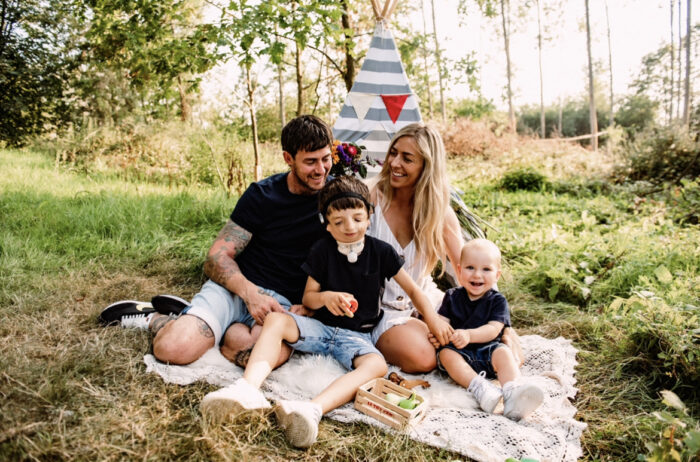
The lifechanging surgery, which occurs in several stages and spans about 18 months, is called Counterclockwise Craniofacial Distraction Osteogenesis (C3DO), and was pioneered by Dr. Richard Hopper and the Craniofacial Team at Seattle Children’s and would potentially enable Loui to one day breathe without a tube in his windpipe.
Seattle Children’s Craniofacial Center developed this new approach and was the first to use C3DO to improve the airway and jaw position in children with Treacher Collins syndrome. State-of-the-art C3DO outcome research is additionally conducted by this interdisciplinary team in the Craniofacial Image Analysis Lab (CranIAL).
Loui’s journey towards becoming free of his tracheostomy will take three procedures at Seattle Children’s over two years. This first phase of the surgery sets Loui up for the C3DO airway surgery after 9-12 months. It includes creating a new stable hinge joint for his lower jaw using bone and cartilage from his ribs.
Life after these three phases of surgery will allow Loui to be more independent and do more of the things he loves like learning about sea life, being a big brother to sibling Vinni, and watching his favorite movies WALL-E and Space Jam.
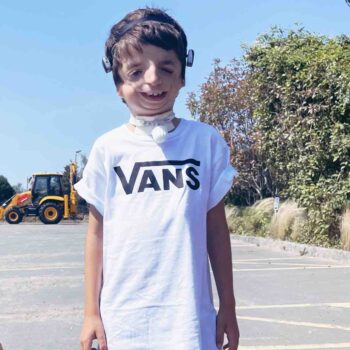
Loui’s dad Luke Heath said one of the things he is looking forward to most will be the opportunity to take his son to the swimming pool. Due to the tracheotomy, Loui currently cannot safely play near water or sand and requires 24-hour care. It also impacts his ability to eat, drink and speak. Treacher Collins syndrome also affected Loui’s hearing, so he must wear a Bone Anchored Hearing Aid (BAHA) on a headband to be able to hear and uses British Sign Language to communicate.
“It’s been like a life sentence and quite the challenge,” Luke expressed. “We know by doing this we’re giving him the best possible chance to be less reliant on support for such a basic life function as breathing.”
The family started fundraising on their GoFundMe page when Loui was just a few months old and was immediately overwhelmed by generous donations from friends, family and even complete strangers.
“We did a few things in the media to try to bring awareness and share the fact that we needed to raise money for Loui’s surgery, and it really just snowballed,” Karly added. “Over the years, we’ve had people come out of the woodwork trying to help. It’s not big charities, this is everyday people like you and me.”
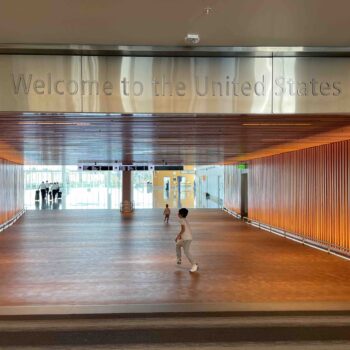
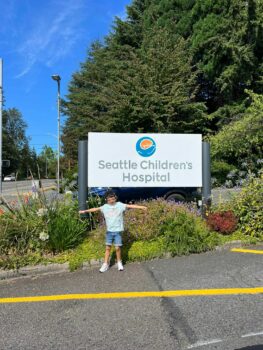
Loui will be the first child to have ever fundraised for this state-of-the-art surgery at Seattle Children’s, as well as the only child from Europe to come over for it. Karly says the expertise and success rate for this kind of surgery in severe cases is why their family chose to travel nearly 5000 miles across the world.
“We’ve been gunning for Seattle Children’s Hospital the whole way ever since we found out about this surgery,” said Luke. “Dr. Hopper pioneered this surgery which is why we’ve come here, for the best of the best.”
The family says Loui’s strength, resilience and ability to remain happy despite everything he has endured is something they are truly proud of.
“When bad things happen, it totally puts life into perspective and makes you see how lucky you are and how lucky we are to have Loui Legend.”
Over the past 5 years, the Craniofacial Team of experts at Seattle Children’s has cared for more than 12,000 pediatric patients with common problems like cleft palate and complex syndromes that affect the shape of the head and face, while also helping to continue educating the community on Treacher Collins syndrome.
Resources:
- Craniofacial Center – Seattle Children’s (seattlechildrens.org)
- Treacher Collins Syndrome – Seattle Children’s (seattlechildrens.org)
- Surgery for Syndromes – Seattle Children’s (seattlechildrens.org)
- Why Choose the Craniofacial Center at Seattle Children’s (seattlechildrens.org)
- Out-of-Area Patients – Craniofacial Center at Seattle Children’s (seattlechildrens.org)
- Craniofacial Image Analysis Laboratory – Department of Surgery (uwsurgery.org)

